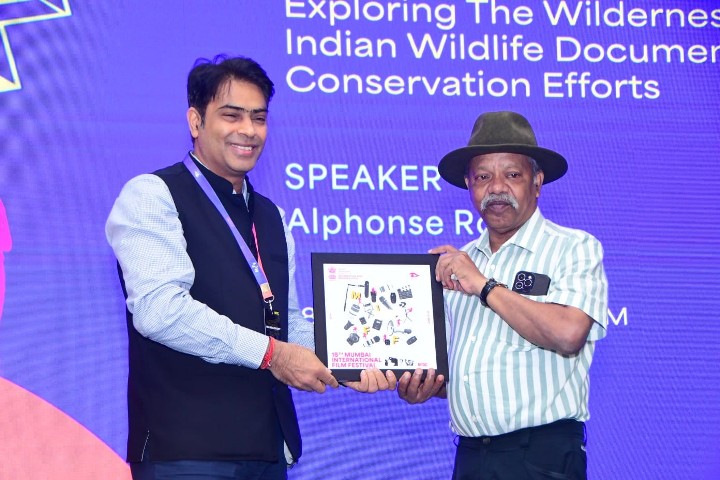At the 18th Mumbai International Film Festival, renowned wildlife filmmaker and cinematographer Shri Alphonse Roy emphasized that the charisma of an animal often dictates its screen time and likelihood of being featured in films. He was conducting a Master Class on "Exploring the Wilderness: Indian Wildlife Documentaries and Conservation Efforts," which explored the complexities of documenting conservation initiatives and Indian wildlife.
Shri Alphonse Roy pointed out that television producers tend to prefer charismatic animals such as tigers, lions, and blue whales over birds or smaller species. "There is a certain hierarchy in wildlife films depending on the charisma of the animal," he added.
For aspiring wildlife filmmakers, Roy stressed the importance of passion. "There is no single place where you can learn wildlife filmmaking. It requires a passion for wildlife, and India, with its rich biodiversity, is the perfect place to pursue it," he advised.
Roy also highlighted the importance of ethical filmmaking, ensuring that the subject and nature take precedence over the shoot. "We wanted to document undisturbed visuals without the animals knowing we were there," he explained, criticizing the tendency of 24/7 wildlife channels to overlook this ethic.
Discussing the evolution of wildlife filmmaking, Roy acknowledged the role of digital technology in making it easier to capture wildlife on mobile cameras but noted the high costs associated with professional wildlife filmmaking today.
Expressing concern over the current state of wildlife conservation in India, Roy pointed out that increasing human population and land constraints are leading to more frequent man-animal conflicts. "We can learn from Africa's approach to wildlife management which allows selective culling of animal herds, although implementing such methods in India is challenging," he remarked.
Roy encouraged students to immerse themselves in nature by joining nature clubs and organizations like the Bombay Natural History Society or the Madras Natural Science Society. He stressed the importance of learning jungle craft and drawing inspiration from tribal knowledge.
In response to questions about incorporating fictional content into wildlife filmmaking, Roy revealed that he is working on a script to bring more wildlife into mainstream cinema. "With OTT platforms, there are immense opportunities to highlight wildlife without relying on big stars," he said.
Reflecting on his personal experiences, Roy recounted the challenges he faced while filming tigers for the first time. "We tried to climb trees and sit on branches, then used a gyro stabilizer, but the noise disturbed the tigers. Eventually, we built a makeshift 14-feet high tripod with bamboo," he shared.
He concluded by highlighting the power of social media in bringing attention to lesser-known species. "If you have an interesting story about a species, you can tell it through your mobile phone and get it noticed," he advised.
An alumnus of the Film & TV Institute of Tamilnadu, Shri Alphonse Roy’s notable works as Director of Photography include acclaimed films such as ‘Gour Hari Dastaan,’ ‘Life is Good,’ and ‘Urumi.’ Roy's cinematic vision has earned him accolades, including a Prime Time Emmy Award for ‘Tibet the End of Time’ (1995) and a Hugo Television Award for ‘Tiger Kill’ (2008), along with a Filmfare Award nomination for Best Cinematography for ‘Aamir’ (2009).











